Faculty Around The Globe
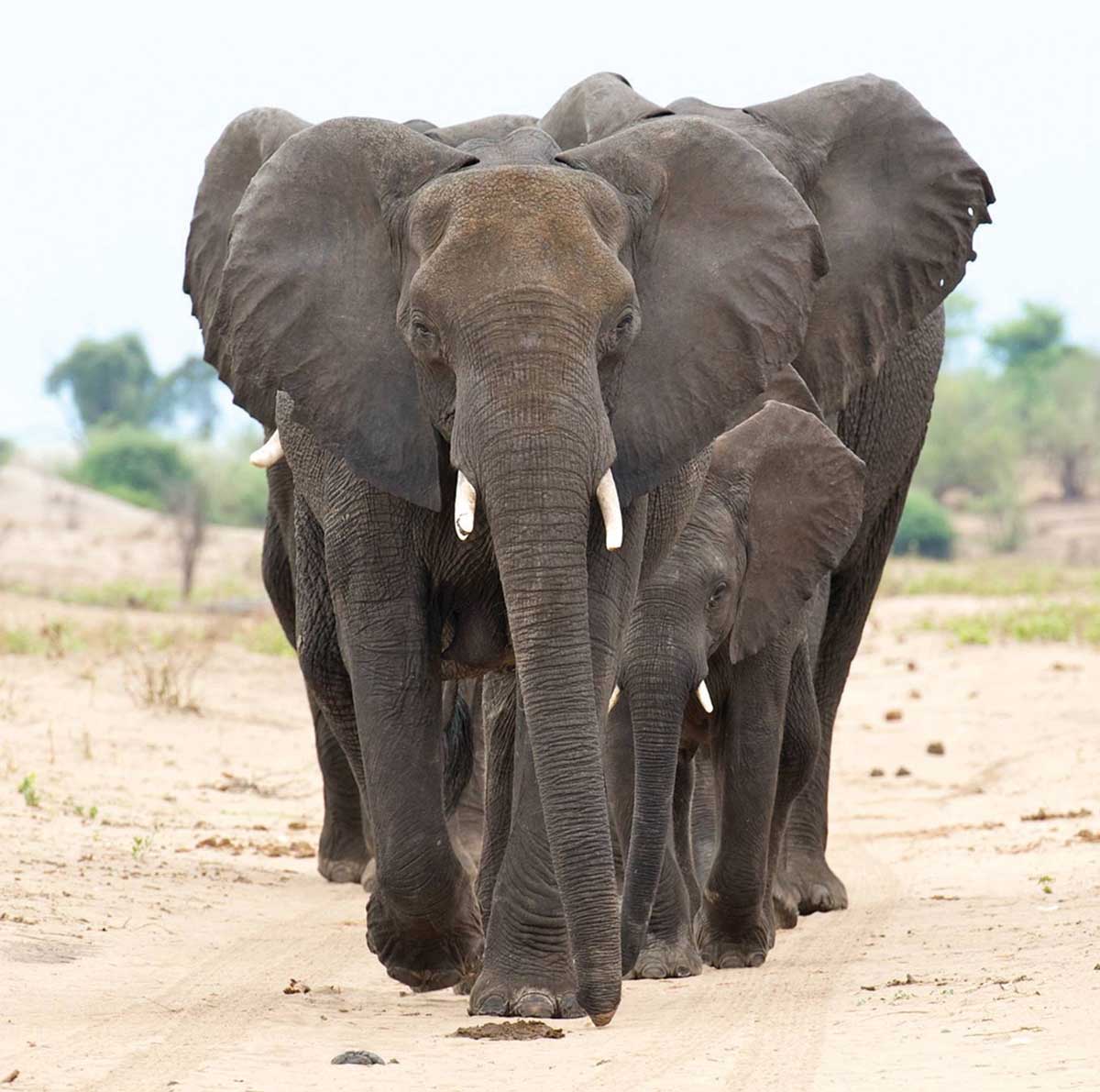
By Lauren Cahoon Roberts & Melanie Greaver Cordova
When it comes to international efforts, CVM faculty are the fulcrum between energized students and engaged graduates. As they teach the importance of planetary health in the college’s clinics, classrooms and labs, they’re also leading by example — forging new relationships with global partners and gathering invaluable data from fieldwork across continents. It is thanks to their efforts and inspiration that CVM continues to keep its finger on the pulse of the planet.
Icelandic ties
Dr. Bettina Wagner | Iceland
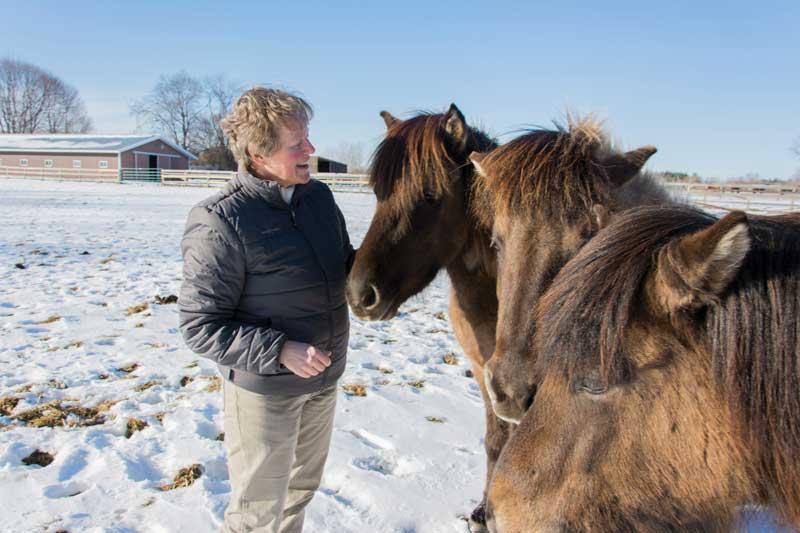
Dr. Bettina Wagner, professor and chair of the Department of Population Medicine and Diagnostic Sciences, studies equine immunology, particularly host immune responses to equine herpesvirus, allergic reactions and neonatal immune development.
As part of this research, Wagner traveled to Iceland to begin working with the native Icelandic horse populations, which have evolved for almost 1,000 years in the absence of common diseases that plagued other equines on the globe, including Culicoides hypersensitivity, an allergic disease induced by allergens from midges. When Icelandic horses leave the country, their immune systems are vulnerable to these allergens — yet their expat foals have far hardier systems than their parents. To unravel this mystery, Wagner brought a breeding herd of Icelandic horses in 2012 to Ithaca, New York. Mares from this herd had already produced foals in their native country, and thus with the help of collaborators at the University of Iceland at the Institute for Experimental Pathology Keldur in Reykjavik, Wagner’s group compared immune reactions from these Icelandic foals with those of their American siblings, gaining key insights into how environmental factors affect immune development.
Wagner also has ongoing collaboration with her Icelandic colleagues in developing an oral immunotherapy to treat allergies in imported Icelandic horses, which have a 50 percent rate of developing allergic reactions compared to those that remain in their homeland.
African Livelihoods, African Wildlife
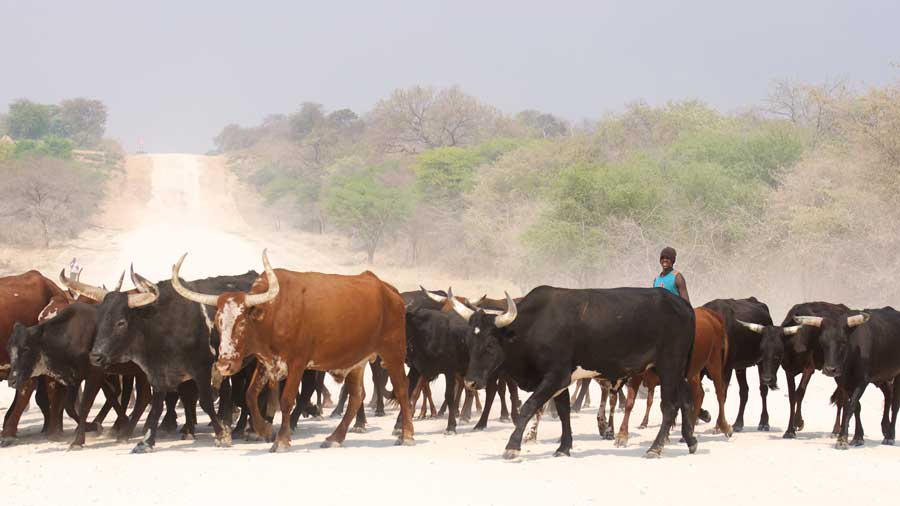
Steven Osofsky D.V.M ’89 | Southern Africa
Steven Osofsky, D.V.M. ’89, leads Wildlife Health Cornell, a College of Veterinary Medicine Center of Excellence. In this role, he’s tackled several pressing One Health problems, including that of the Kavango-Zambezi Transfrontier Conservation Area (KAZA), a 500,000-square-km conservation and development initiative that spans five countries — Botswana, Namibia, Angola, Zambia and Zimbabwe. KAZA’s wilderness is home to more than half of all remaining African elephants, and many other endangered and threatened species. It is also transected by thousands of miles of fences to keep beef cattle separated from wild buffalo to avoid transmission of foot and mouth disease, which can sicken cattle and cause trade embargoes on beef from affected countries. The fences also block migratory routes of African wildlife. “Hundreds of thousands, if not millions, of animals have died along these fences since the 1950s because they couldn’t get access to seasonal grazing and fresh water,” Osofsky said. He and his team worked with southern African colleagues to get global policy changed so that rather than having to physically separate livestock from wildlife through extensive fencing, cattle farmers could instead implement basic meat production biosafety principles to ensure a safe product. Non-fence-based approaches are now being piloted.
Tracking new disease threats
Dr. Martin Gilbert | Indonesia, Thailand, India, Nepal & Bhutan
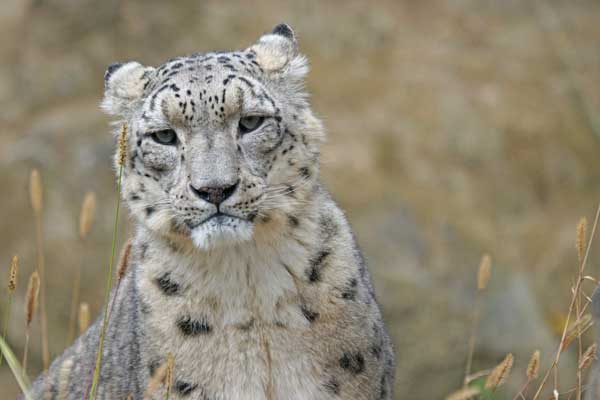
Tigers have been classified as endangered by the International Union for Conservation of Nature since 1986, and despite significant efforts by countless dedicated conservationists, both the number of wild tigers and their range have decreased by 50 percent in the past 20 years. Not long ago, canine distemper virus (CDV) was identified as a new threat to wild tiger populations in the Russian Far East, and the potential effect of this new threat on wild tiger populations is considerable. With support from Cornell’s Feline Health Center, Dr. Martin Gilbert, senior research associate in the Department of Population Medicine and Diagnostic Sciences and Wildlife Health Cornell’s wild carnivore specialist, is expanding his efforts to investigate the prevalence of CDV infection in wild tiger populations. He is examining the previously unstudied tiger populations of Indonesia, Thailand, India, and Nepal, as the first step in characterizing the potential risk of CDV to these vulnerable populations. The protocols established by this study will then facilitate future surveillance of these populations for CDV, information that will prove vital in the design of rational control strategies for CDV, should they be needed.
Because the global tiger population continues to decline, the loss of every individual becomes ever more important to the conservation of the species. Thus, in July, Gilbert flew to Bhutan to assist local conservationists in diagnosing the cause of death of a wild tiger that had just succumbed to illness. The tiger had been afflicted with a neurological disease that strongly resembled tiger cases of canine distemper virus, a focus of Gilbert’s research in the Russian Far East. Preliminary findings were surprising, as the tiger was found to have had a condition that has never been recorded in any wild cat species. Two fluid-filled cysts produced by the larval stage of the human tapeworm, Taenia solium, had grown on the surface of the tiger’s brain, pressing on the tissue and providing a plausible explanation for the tiger’s neurological signs. Gilbert returned to the Animal Health Diagnostic Center in Ithaca with tissues that are now being analyzed to determine whether other factors (such as immunosuppression) may have contributed to the development of the tiger’s condition, information that will be critical to determining if this case is a rare anomaly, or the first sign of a wider problem
Relationships established during Gilbert’s visit have created momentum in increasing the capacity of Bhutan’s veterinarians to recognize and respond to disease threats facing the country’s tigers. In November, government veterinarian Dr. Yoenten Phuentshok joined Gilbert in Bangkok for specialized training in laboratory techniques that can be used to determine whether canine distemper may be a threat to tigers in Bhutan. Helping to equip local colleagues like Phuentshok with the tools and skills needed to manage the health of their wildlife is essential if we are to ensure a future for what’s left of wild nature.
Balancing act
Dr. Martin Gilbert | Kyrgyzstan & Tajikistan
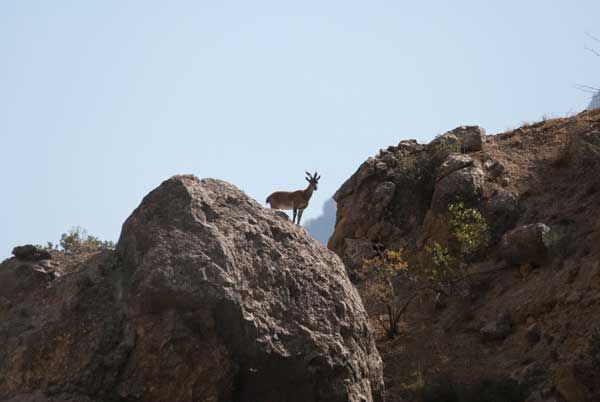
In the Pamir Mountains of Tajikistan and Kyrgyzstan, Dr. Martin Gilbert is leading a project in a fragile ecosystem of limited resources where disease outbreaks are common among both wild and domestic ungulates like goats and sheep. This in turn threatens the survival of top predators like the snow leopard, affecting the livelihoods of local herding communities. The suitability of these high-altitude landscapes to support snow leopards is primarily influenced by the density of wild ungulate prey species, such as ibex and Marco Polo sheep. These wild goats and sheep compete with livestock for scarce grazing resources, intensifying nutritional stress all around, and leading to proximity that enables the transmission of pathogens. Disease outbreaks have repeatedly led to mortality in wild ungulate herds, while local herders report that disease-related mortality is the primary cause of death for their livestock. Additionally, transmission of brucellosis from animals to people is widely reported, and is an important public health concern for these livestock herding communities.
With the support of the Atkinson Center for a Sustainable Future, Gilbert and his team are developing a model veterinary support program with partners in Tajikistan and Kyrgyzstan to identify and address the most important health threats to domestic and wild ungulates. This community-led initiative will link livestock health interventions to the protection of snow leopards and their prey, using a self-funded model supported through the sale of livestock and their products. This project is based on the philosophy that smaller numbers of healthier livestock can provide the same benefits to local communities, while reducing competition with and disease threats to the wild ungulates on which snow leopards depend. This One Health approach creates space for wild ungulates to flourish together with the snow leopards that rely on them, thereby promoting a healthy, sustainable coexistence for people and wildlife in this region.
Conservation and community
Dr. Robin Radcliffe | Republic of Congo, Uganda & Indonesia
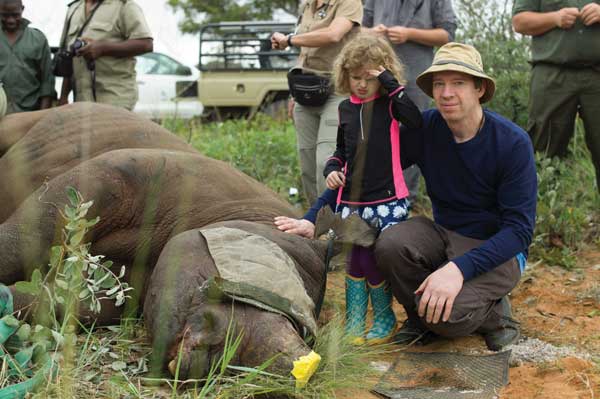
Dr. Robin Radcliffe, senior lecturer in wildlife and conservation medicine at the college, has several international efforts to help protect some of the most endangered animals on the planet.
Radcliffe has longstanding partnerships with the World Wildlife Fund’s Ujung Kulon Program in Indonesia to help preserve the Javan and Sumatran rhinoceroses and the Jane Goodall Institute in the Republic of Congo and Uganda to protect great apes.
His work in Indonesia focuses on managing disease risks and improving livestock health to better protect endangered Javan and Sumatran rhinoceroses from catching diseases shared across species. Radcliffe has also engaged in public education and outreach as part of his conservation goals — he wrote and illustrated a children’s book about the Sumatran Rhino, The Hornless Rhinoceros, 10,000 copies of which have been distributed to schoolchildren in Indonesia living close to these endangered rhinos to encourage awareness in the next generation.
Radcliffe is also helping rhinos in Africa. Together with a team of scientists and game managers from the Namibian Ministry of Environment and Tourism, Radcliffe is leading studies on the safe translocation of rhinoceroses using novel methods, including the airlifting of rhinos using helicopter transport. Their work shows that rhinos hanging upside down by their feet do well for short periods of time and is a safe method for moving rhinos out of difficult terrain, work that is essential for protection from poaching.
As a natural consequence of his work around the world, Radcliffe has created unique training partnerships in conservation and One Health. Through an Engaged Cornell Curriculum Award and fellowship program, doctoral students in veterinary medicine and undergraduate students engage in hands-on experiences in community-based conservation projects, including ones with Indonesian rhinoceroses and African great apes together with the Jane Goodall Institute.
Examining ancient equine genetics
Dr. Doug Antczak ’69 | Saudi Arabia
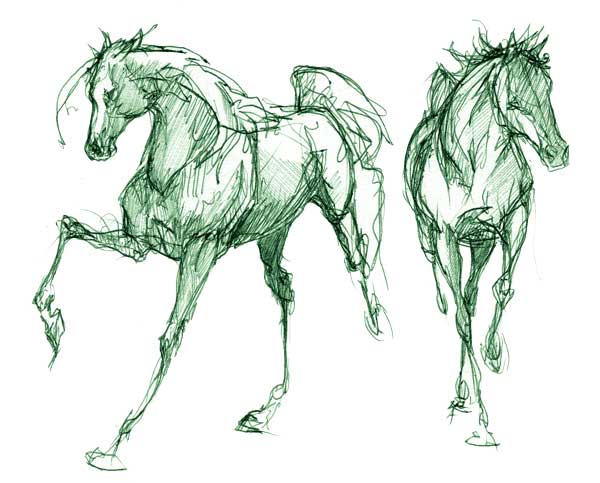
Dr. Doug Antczak ’69, the Dorothy Havemeyer McConville Professor of Equine Medicine, first gained entry to the world of Arabian horses through his work on Lavender Foal Syndrome, a deadly genetic defect that causes foals to be born with severe neurological problems and a lavender-tinted coat. In 2010 Antczak and his colleague Dr. Samantha Brooks discovered the mutation that causes the syndrome, developing a molecular genetic test widely used by Arabian breeders to identify carriers of the mutation. This led to research project on Arabian horse genetics funded by the Qatar National Research Fund. This work has enabled Antczak and his colleagues to travel extensively in the Middle East over the past five years to collect samples from Arabian horses in many countries.
This spring, Antczak was an invited speaker at the Asharqia Arabian Horse Festival in Saudi Arabia, where he presented his research on the genetic relationships between Arabians and other horse breeds. Bred by Bedouin tribes on the Arabian Peninsula, this horse has long been a fixture of Arabian culture, even appearing in rock art dating to 3,500 years ago. The new information emerging from this study will clarify the role of the Arabian horse in the development of other horse breeds, including the Thoroughbred.
Dignity for donkeys in Barbuda
Erin Goodrich ’04, D.V.M. ’08 | Barbuda
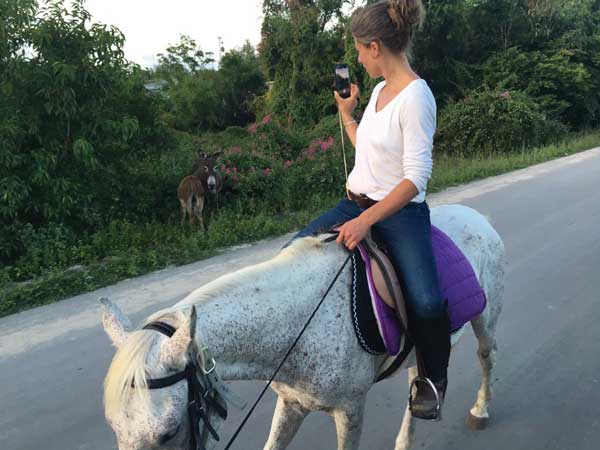
Erin Goodrich ’04, D.V.M. ’08
Erin Goodrich ’04, D.V.M. ’08, senior extension associate in the Department of Population Medicine and Diagnostic Sciences, leads a project aiming to address welfare issues for the feral donkey population on the Caribbean island of Barbuda. “We are aiming to create mutually fulfilling relationships between the donkeys, the people of Barbuda and those who visit the island,” said Goodrich. “We would like to eventually establish a sanctuary for the some portion of the donkeys on the island so that lifelong quality care could be provided to the those animals as well as education to the people in an effort to foster compassion and appreciation for the species.”
Goodrich traveled to Barbuda in the fall of 2016 and then again in the spring of 2017, when third-year veterinary student Mana Okudaira ’15, D.V.M.’18,accompanied her to help estimate the population of donkeys around the one and only town on the island, Codrington. The two assessed the population via horseback, collecting videos and photographs of the donkeys as they went.
While the destruction of 2017’s Hurricane Irma has slowed progress on the project, Goodrich plans to collaborate with archeologist Sophia Perdikaris, professor and chair of the Anthropology Department at the University of Nebraska-Lincoln. Perdikaris has been doing research on Barbuda for many years and has an active research station still set up on the island. Together, they hope to establish a program to improve the lives of the donkeys, horses and small companion animals on the island.
Quality milk around the world
QMPS faculty | Worldwide
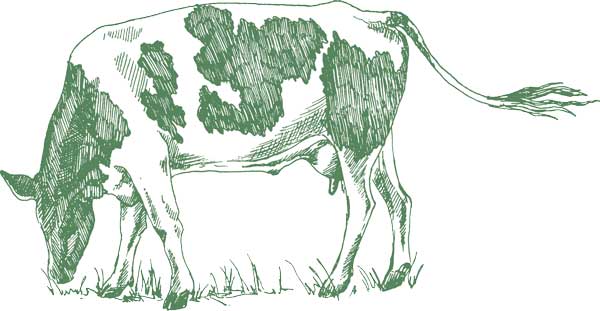
The Quality Milk Production Service (QMPS) not only services dairy producers in New York state and the rest of the country, but all over the world as well as part of the QMPS’s Mastitis Academia. Founded in 2012
Founded in 2012 by Dr. Ynte Schukken, the program sends QMPS veterinarians including: Daryl Nydam, D.V.M. ’97, Ph.D. ’02; Paula Ospina, D.V.M. ’03, Ph.D. ’12; Paul Virkler ’95, D.V.M. ’98; Rick Watters, Ph.D. ’11; Dr. Paolo Moroni; Dr. Anja Sipka; Dr. Matthias Wieland; Dr. Frank Welcome; and Dr. Michael Zurakowski to conduct educational workshops and consulting for dairy producers and veterinarians. The program has long-standing relationships with partners in Mexico, Italy, Turkey, Chile, China, Russia and Brazil. They also conduct trainings and consulting in Canada, Uruguay, Denmark, Argentina, South Africa, the Netherlands, United Kingdom, Spain, and Portugal. The program regularly welcomes international students, including those from China and Russia, for training at Cornell. Workshop attendees spend time both in lecture and out on farms to get an in-depth training on dairy management with the specific goal of improving milk quality and reducing the use of antibiotics.
These global partnerships have sparked research collaborations, including a paper published in the June 2018 issue of Toxins that evaluated 120 isolates of Staphylococcus aureus, the primary contagious bacteria responsible for mastitis, from eight different countries. The paper investigated the circulating genetic lineages among international cow populations, finding new genotypes for South African strains, and new variants of existing genotypes for all other countries. Overall, the study suggests that veterinarians consider the region of interest when formulating management strategies.
Raising the standards
Dr. Marta Castelhano | WORLDWIDE

After devastating malfunctions at San Francisco and Cleveland fertility clinics, the International Society for Biological and Environmental Repositories (ISBER) deployed their taskforce to accelerate the review of a new international biobanking standard to prevent such malfunctions from ever happening again. ISBER invited Dr. Marta Castelhano, senior research associate with the College of Veterinary Medicine and director of the Cornell Veterinary Biobank, to be their taskforce expert in non-human biobanking. In August, with the input from this taskforce, ISO released standard 20387, a baseline for biobanks worldwide.
Castelhano’s role on the taskforce put her at the forefront of the community’s drive to standardize biobanking practices. The National Institute of Standards and Technology invited her to represent the United States as a technical expert and delegate for the International Organization for Standardization (ISO). The ISO is an independent, non-governmental organization that brings together experts from 168 countries to develop standards for almost every industry. It is the most prominent organization for the implementation of standards in the world.
With the ISO, Castelhano is developing an implementation document for the biobanking standard, which will help organizations incorporate the requirements into their day-to-day practices. She’ll also help develop an ISO document specific to non-human biobanks. Castelhano will represent the U.S. position by developing, reviewing and voting on content with delegates from the other member countries.
New partnerships
Dr. Caroline Yancey | Uzbekistan & Azerbaijan
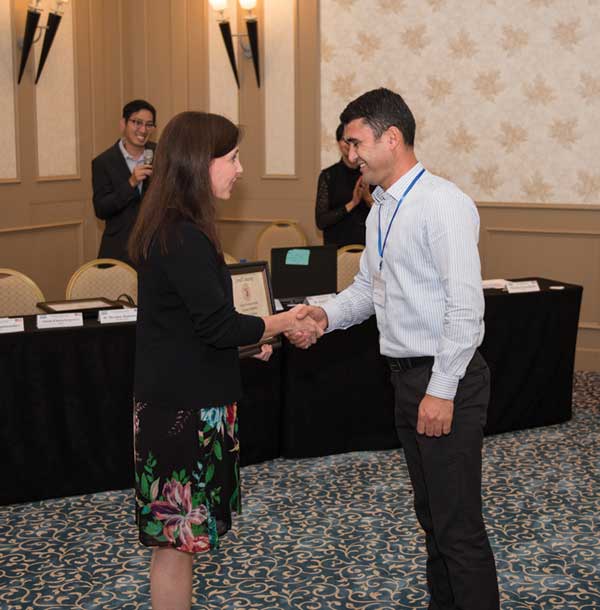
This fall, Dr. Caroline Yancey made the long journey to Tashkent, Uzbekistan as part of the Uzbekistan Biological Science Engagement Program. Sponsored by the U.S. Department of Defense, the program enhances Uzbekistan’s capability to safely and rapidly detect, diagnose and report dangerous pathogens, promoting global health security.
The program ran a training session called “Principles of Effective Participation at Scientific Conferences” for researchers and laboratory staff representing the Uzbek Ministry of Health and State Veterinary Committee. Yancey, Associate Director for International Programs and Lecturer in the Department of Population Medicine and Diagnostic Sciences, was a featured presenter, outlining opportunities for international scholarly collaborations, including fellowships, internships and research collaborations at Cornell. She also addressed scientific poster designs and workshopped necessary skills that will help the country’s scientists integrate into the international scientific community. Her visit was a follow-up to a program earlier this summer, when CVM hosted two Uzbekistani scientists, and she is working on future collaborations with the program as well.
Yancey’s engagement in such initiatives comes from her expertise in international capacity building and disease surveillance. In addition to infectious disease research at North Carolina State University, Yancey managed an epidemiology and infectious disease training program in support of national biosurveillance capacity-building in Azerbaijan.
“Collaborating with international scientists provides a great opportunity to learn from colleagues from other cultures and training backgrounds,” said Yancey. “International exchanges are also an excellent opportunity for both Cornell and Uzbekistani veterinary students.”
Preventing poultry pandemics around the globe
Jarra Jagne, D.V.M.’90 | WORLDWIDE
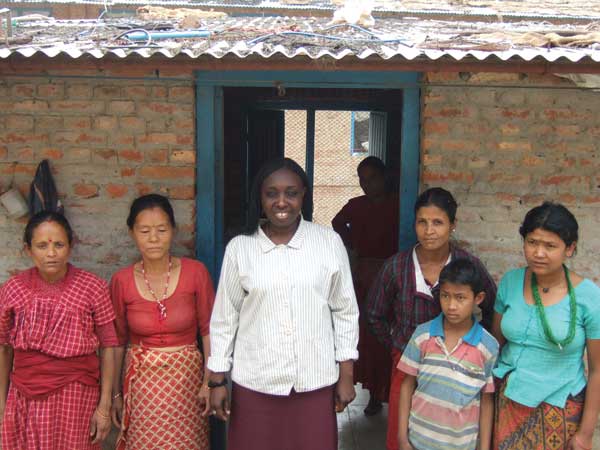
Jarra Jagne, D.V.M. ’90, a senior extension associate in the Department of Population Medicine and Diagnostic Sciences, specializes in field investigation of common diseases of poultry, and has spent much of her career tackling these issues across the globe. Prior to her role at Cornell, Jagne worked for the United Nations Food and Agricultural Organization based in Rome and the U.S. Agency for International Development. She traveled to thirty countries, many in Southeast Asia, Central Asia and Africa, to train veterinarians in outbreak responses, specifically for the zoonotic H5N1 Highly Pathogenic Avian Influenza (HPAI). In this position, Jagne provided technical advice and assistance in enhancing laboratory capacity, and assessed emergency preparedness plans of countries for the control and eradication of HPAI. In the field, Jagne instructed farmers in the fundamentals of good poultry management for good poultry health, including best practices of sourcing, housing, nutrition and basic sanitation of poultry. She also trained farmers on biosecurity and using best practices to keep diseases out of their farms. Jagne also served as senior veterinary and project officer for the Ministry of Agriculture of Gambia, in West Africa where she supervised a veterinary clinic, co-directed the Pan-African Rinderpest Campaign and acted as National Coordinator for the United Nations Women in Development project.
Applying Planetary health around the globe
Dr. Montira Pongsiri | worldwide

Dr. Montira Pongsiri, planetary health science policy advisor in the Department of Population Medicine and Diagnostic Sciences, has spent her career at the science-to-policy interface, including serving as the first advisor at the U.S. Mission to the Association of Southeast Asian Nations (ASEAN) — a regional intergovernmental organization focused on cooperation for economic, political and sociocultural integration. Before coming to Cornell, Pongsiri was based in Jakarta, Indonesia from 2012 to 2014, where she focused on developing science-based guidance and programs to support climate adaptation and resilience planning.
In her role at Cornell, Pongsiri works as a member of the health policy team, led by Steven Osofsky, D.V.M. ’89, the Jay Hyman Professor of Wildlife
Health and Health Policy, to serve as an international ambassador for planetary health. Planetary health is defined as a field focused on improving the understanding of and ability to measure the public health impacts of human-caused environmental change to inform decision-making in the land-use planning, ocean-use planning, environmental conservation, and public health policy realms.
Pongsiri recently worked with the Inter-Academy Partnership (the global network of National Academies of Sciences) to organize a planetary health meeting in Manila, hosted by the Philippines National Academy of Science and Technology. Together with academic researchers from the University of the Philippines, they presented a set of planetary health case studies in the Asia-Pacific Region, which covered ongoing work in the Philippines on the relationship between access to water, sanitation, and hygiene and the risk of water-borne diseases such as diarrhea.
At the International Conference for Healthy City Design in London, Pongsiri helped organize a planetary health symposium that cultivated a new network of urban design practitioners with an interest in incorporating health into their practices. The annual conference organizers have committed to including a planetary health theme in future events.
Pongsiri currently represents Cornell as a visiting scientist at the UN Environment Asia-Pacific Regional Office in Bangkok, Thailand, where she helps UN agencies in the region to incorporate environment and health into their long-term strategic planning and activities.
“With the UN’s renewed focus on environment and health relationships and its formal partnership with ASEAN, it’s a great time for me to be back in Southeast Asia,” says Pongsiri. “I feel quite fortunate to be representing Cornell while working with colleagues here in Southeast Asia on sustainably improving our environment, our health and our shared future.”
Deepening insight
Dr. Kathryn Fiorella | Kenya & Cambodia
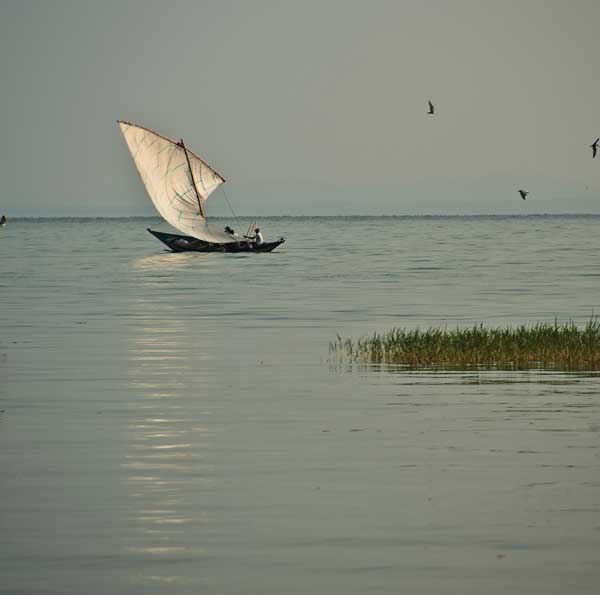
In an effort to understand the effects of environmental change on food, livelihoods and nutrition security, Dr. Kathryn Fiorella’s work reaches as far as Lake Victoria fishing communities in Kenya and rice field fisheries in Cambodia.
Fiorella, assistant professor in the Department of Population Medicine and Diagnostic Sciences and the Masters in Public Health Program, studies health-environment dynamics, drawing from interdisciplinary methods and training in ecology, public health, economics and sociology.
“Our work aims to foster a deeper understanding of how ecological and social systems interact, the ways communities and households adapt to and mitigate environmental change, and the links between human wellbeing and ecological sustainability,” said Fiorella.
Most recently, Fiorella’s team found how deeply human health can affect environmental health in Lake Victoria, Kenya. In a paper published with PNAS, Fiorella details how residents were fishing the lake in unsustainable ways. Instead of going out to deeper waters where more mature fish can be caught, they were fishing in the shallower breeding grounds. The reason? Many of the residents were sick with illnesses like HIV/AIDS, malaria or typhoid, making them too weak to get far out on Lake Victoria.
“When sick, these fishers use methods that are less physically demanding but illegal and environmentally destructive,” said Fiorella. “Millions of people around the world rely on natural resources for food and livelihoods – and confront a high burden of illness.”
New partnerships
Dr. George Kollias | Belize
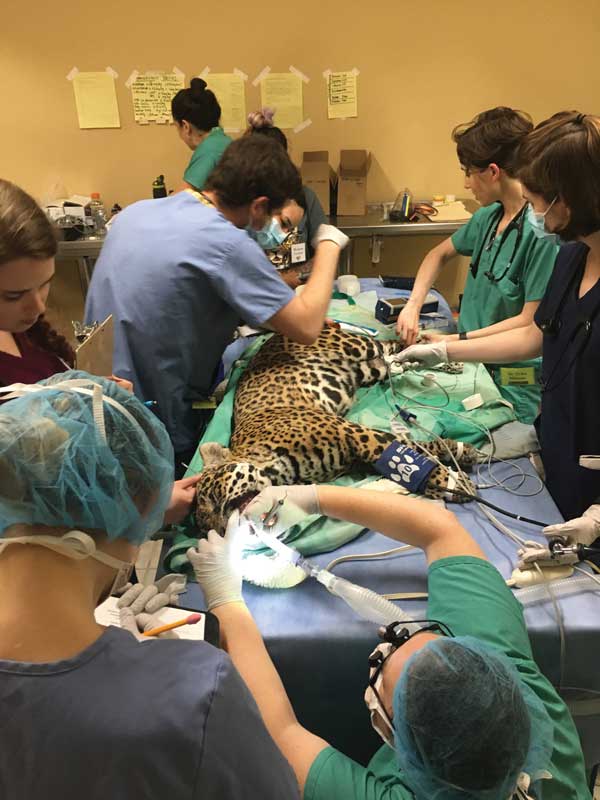
Since 2011, Dr. George Kollias, the Jay Hyman Professor of Wildlife Medicine emeritus, has fostered a partnership between CVM and the Belize Zoo. Kollias and Drs. Santiago Peralta, Robin Gleed and Jordyn Boesch, D.V.M. ’06, have led trips that include veterinary students as well as representatives from the sections of anesthesiology, zoological medicine and dentistry and oral surgery.
“These trips to the Belize Zoo broaden the experience of Cornell veterinary students and specialists, and provide high-quality specialized medical services to the zoo animals,” said Peralta. Practitioners also collect medical and scientific information relevant to the conservation and welfare of endangered and non-endangered species indigenous to Central America.
Thanks to Kollias, the wild residents of the Belize Zoo are now enjoying a brand new veterinary clinic. Kollias and other Cornell team members celebrated this milestone with the Belize Zoo when the clinic opened on site this summer. At the opening ceremony, which coincided with the last day of Cornell’s trip, zoo staff unveiled a plaque in Kollias’ honor and called him the “driving force” behind the new clinic.
“We look forward to continuing our great working and teaching relationship with the zoo,” said Kollias, “and continue to help make improvements and contributions to the great care the animals already receive.”
African partnership for new vaccines
David Russell | South Africa & Malawi
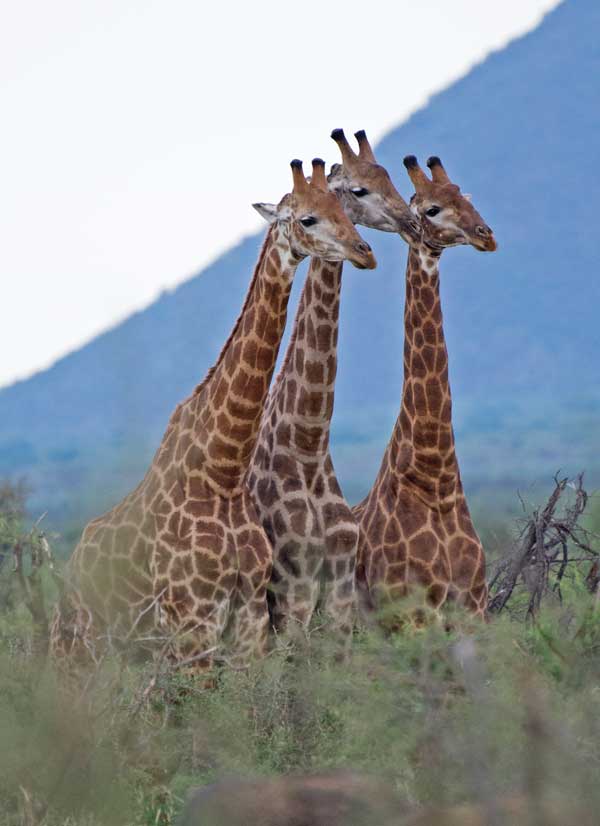
Dr. David Russell, William Kaplan Professor of Infection Biology, studies some of the world’s most persistent and impactful diseases: tuberculosis (TB) and HIV, partnering with researchers in South Africa and Malawi to discover new drug targets to better treat these diseases.
In work funded by the NIH and the Bill & Melinda Gates Foundation, the Russell lab has developed real-time fluorescent readouts of TB bacterial fitness and replication to better understand how certain host cells limit or permit bacterial growth. Russell also examines the connection between HIV and TB, which frequently co-infect people in sub-Saharan Africa — indeed, TB is the largest single cause of death in people that have HIV. Russell uses his fluorescent bacterial reporter technology on cells and tissue from human tuberculosis (and TB-HIV) patents at the Malawi-Liverpool-Wellcome Clinical Research Program in Blantyre, Malawi, and the African Health Research Institute, Durban South Africa.
Russell is also conducting large-scale drug screens for potential TB vaccines that attack the bacteria in novel ways. Through this work, Russell has identified compounds that inhibit the bacteria’s ability to metabolize cholesterol — it’s preferred source of nutrients. “Killing the bacteria may not be as important as people assume,” Russell said. “Growth restriction could prove to be more effective.”
During his time doing fieldwork in Africa, Russell find opportunities to photograph the native wildlife there, capturing breathtaking imagery of the rich and delicate biodiversity that thrives in this part of the world.
Institutional collaborations
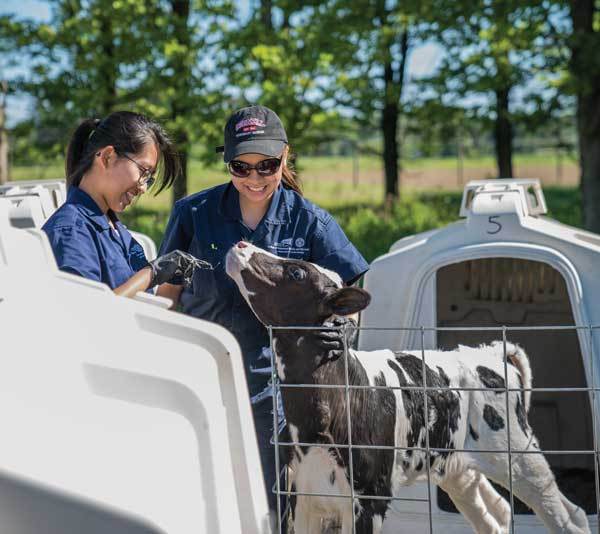
The Cornell University College of Veterinary Medicine has several institutional collaborations — both formal and informal — that span the globe, helping to share and enrich our multifaceted expertise.
Jockey Club College of Veterinary Medicine and Life Sciences at City University of Hong Kong: For the past decade, City University of Hong Kong and Cornell University’s College of Veterinary Medicine have collaborated to establish a veterinary college in Hong Kong modeled on Cornell’s innovative, problem-based curriculum. The six-year Bachelor of Veterinary Medicine degree program is now well on its way to accreditation. The school specializes in emerging infectious diseases, food safety, animal welfare and aquatic production. “Our partnership with the Jockey Club College of Veterinary Medicine and Life Sciences allows for a rewarding exchange of knowledge,” said Dr. Alexander Travis, associate dean for international programs and public health. “They have access to and knowledge of extensive warm water and saltwater aquaculture operations and more high-density poultry and swine operations which we do not have here in Ithaca, while we can share our expertise in evidence-based veterinary training in companion and equine medicine.”
Tata Trust Animal Medical Center, Mumbai: Animal healthcare is a new focus area for Tata Trusts, a major Indian philanthropic foundation. The Trusts aim to set up veterinary infrastructure and services in Mumbai, India, in collaboration and consultation with the Cornell University College of Veterinary Medicine. “India has one of the world’s most quickly growing pet population, as well as one of the largest populations of street animals,” said Travis. “This is leading to huge demand for improved general and specialty care, as well as public health interventions around serious zoonotic diseases like rabies.”
As part of the collaboration, college experts are advising in the design of the new modern veterinary medical facilities in Mumbai, as well as assisting in establishing crews of veterinary specialists that can staff these hospitals.
The extensive facility research and consulting from this project has helped the college in its own planning and designing of the newly-opened Small Animal Community Practice. Furthermore, because Indian veterinarians have access to much higher caseloads and much more affordable pharmaceuticals, future collaborations improve and accelerate many of Cornell’s clinical trials.
Obihiro University of Agriculture and Veterinary Medicine: Japan’s Obihiro University of Agriculture and Veterinary Medicine has had a longstanding relationship with the college, in which many faculty members, including Rodman Getchell, Ph.D.’02, Dr. Hélène Marquis, Soon Hon Cheong, Ph.D.’12, and Dr. Karyn Bischoff have traveled to consult and exchange ideas on veterinary medicine. “Obihiro has excellent strengths in key veterinary medicine areas that we can learn from, such as protozoal parasites,” said Travis. “They’re also benefitting from our knowledge on large animal medicine and aquatic animal health.” The collaboration has also enabled a CVM veterinary student to travel to Obihiro to conduct a summer research project, and promises to lead to more cross-institutional research efforts.


